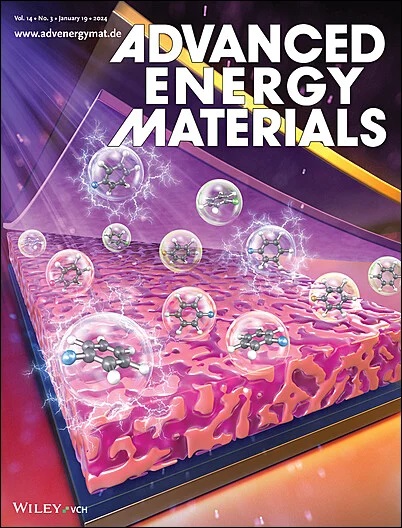Repair Surface Defects on Biomass Derived Hard Carbon Anodes with N‐Doped Soft Carbon to Boost Performance for Sodium‐Ion Batteries
IF 24.4
1区 材料科学
Q1 CHEMISTRY, PHYSICAL
引用次数: 0
Abstract
Biomass‐derived hard carbon (HC), a promising anode material for sodium‐ion batteries with low cost and good cycling ability, has high surface activity that easily reacts with the electrolyte, causing low initial coulombic efficiency (ICE) and poor stability. This article proposes a facile synthesis of pine wood‐derived HC material with N‐doped soft carbon (SC) coating strategy to improve electrochemical performance, especially for the ICE. The optimized anode material exhibits higher reversible capacity of 314.0 mAh g用N掺杂软碳修复生物质硬碳阳极表面缺陷以提高钠离子电池性能
生物质硬碳(HC)表面活性高,易与电解液发生反应,导致初始库仑效率(ICE)低,稳定性差,是钠离子电池极具发展前景的负极材料,具有成本低、循环性能好等优点。本文提出了一种用N掺杂软碳(SC)涂层快速合成松木衍生HC材料的策略,以提高其电化学性能,特别是ICE。优化后的阳极材料在30 mA·g−1时的可逆容量为314.0 mAh g−1,ICE提高了85.2%,在5.0 c时的高倍率性能为260.0 mAh g−1,结合原位/非原位表征,SC涂层大大增加了有利于提高钠储存的封闭孔隙,并且阳极材料被探索为吸附-填充钠储存行为,有利于高倍率性能。密度泛函理论(DFT)计算进一步表明,SC中氮的掺杂大大增强了钠的吸附动力学,为Na+的储存提供了更多的吸附位点,增加了钠的储存容量。这项工作为硬碳的表面改性提供了深入的见解,并为高效HC阳极的设计提供了新的机会。
本文章由计算机程序翻译,如有差异,请以英文原文为准。
求助全文
约1分钟内获得全文
求助全文
来源期刊

Advanced Energy Materials
CHEMISTRY, PHYSICAL-ENERGY & FUELS
CiteScore
41.90
自引率
4.00%
发文量
889
审稿时长
1.4 months
期刊介绍:
Established in 2011, Advanced Energy Materials is an international, interdisciplinary, English-language journal that focuses on materials used in energy harvesting, conversion, and storage. It is regarded as a top-quality journal alongside Advanced Materials, Advanced Functional Materials, and Small.
With a 2022 Impact Factor of 27.8, Advanced Energy Materials is considered a prime source for the best energy-related research. The journal covers a wide range of topics in energy-related research, including organic and inorganic photovoltaics, batteries and supercapacitors, fuel cells, hydrogen generation and storage, thermoelectrics, water splitting and photocatalysis, solar fuels and thermosolar power, magnetocalorics, and piezoelectronics.
The readership of Advanced Energy Materials includes materials scientists, chemists, physicists, and engineers in both academia and industry. The journal is indexed in various databases and collections, such as Advanced Technologies & Aerospace Database, FIZ Karlsruhe, INSPEC (IET), Science Citation Index Expanded, Technology Collection, and Web of Science, among others.
 求助内容:
求助内容: 应助结果提醒方式:
应助结果提醒方式:


